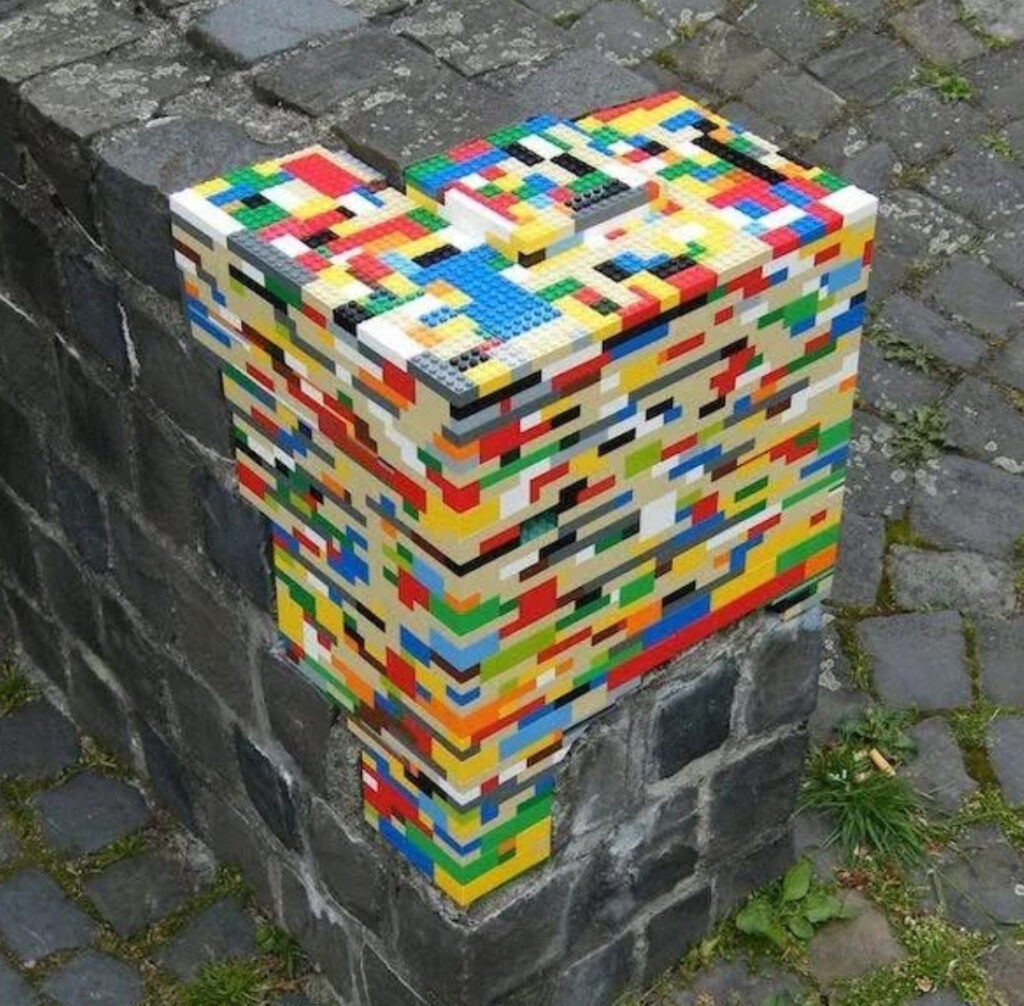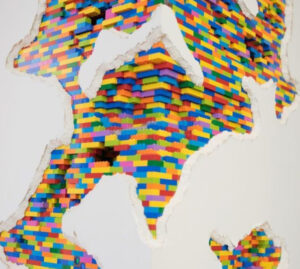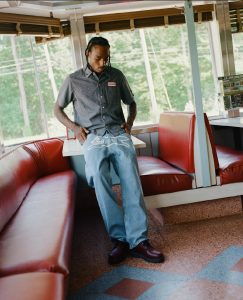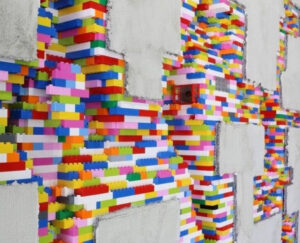
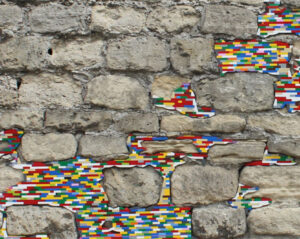
“LEGO fills every gap.” This phrase, shared by Chris Jmp Loyens, captures the essence of what LEGO represents—not just as a toy but as a symbol of problem-solving, adaptability, and limitless creativity. LEGO is more than just interlocking plastic bricks; it’s a medium that bridges gaps—literally in structures and metaphorically in education, innovation, and human connection.
From engineering and architecture to therapy and artistic expression, LEGO has found its way into virtually every corner of life.
Repairing and Enhancing Everyday Objects
One of the most fascinating aspects of LEGO is how it can be used as a practical solution for everyday problems. From replacing broken furniture parts to filling in missing tiles on walls and sidewalks, LEGO proves to be a sturdy, adaptable, and colorful substitute.
Examples of LEGO being used in repairs:
•Wall and Sidewalk Repairs: Artists like Jan Vormann have used LEGO bricks to repair gaps in old buildings and public spaces, turning crumbling infrastructure into playful urban art.
•Furniture Fixes: Missing a table leg? A stack of LEGO bricks can serve as a temporary or even permanent solution.
•Custom Home Accessories: Many people use LEGO to create key holders, cable organizers, and storage solutions, filling practical gaps in their homes.
LEGO’s modularity allows for precise, customizable solutions, making it an unexpectedly useful material in DIY home repairs.
LEGO in Creativity and Art: Filling the Gap Between Imagination and Reality
A Medium for Artistic Expression
LEGO is not just a toy—it’s a medium for expression and storytelling. Artists and creators worldwide use LEGO to translate their ideas into tangible forms, filling the gap between imagination and reality.
Notable LEGO-based art projects include:
•Nathan Sawaya’s LEGO Sculptures: This artist has created museum-worthy LEGO sculptures, proving that LEGO can be as expressive as any traditional art form.
•Stop-Motion Animation: Filmmakers use LEGO to create intricate stop-motion films, bridging the gap between play and professional filmmaking.
•Recreating Famous Works: LEGO enthusiasts have meticulously reproduced famous paintings, historical monuments, and even movie scenes with incredible detail.
Filling the Educational Gap for Future Creators
LEGO also plays a crucial role in education by providing a hands-on way to teach creativity, problem-solving, and engineering principles. Through platforms like LEGO Mindstorms and LEGO Education, students gain skills in robotics, programming, and engineering in an engaging way.
LEGO in STEM and Problem-Solving
Engineering and Prototyping
LEGO is widely used in engineering and product development as a quick and inexpensive way to create prototypes. It allows designers to test structures, mechanisms, and design principles before committing to more expensive materials.
Applications include:
•Building functional robots with LEGO Mindstorms
•Creating architectural models before full-scale construction
•Designing new mechanical systems in a flexible, non-permanent way
Filling the Gap in STEM Education
LEGO-based learning tools are helping bridge the gap between theoretical learning and real-world application. Programs like FIRST LEGO League engage young minds in robotics and problem-solving, making STEM subjects more accessible and exciting.
LEGO as a Social Connector
Bridging Generations and Cultures
LEGO is one of the few toys that transcends generations, languages, and cultures. Whether you’re five years old or fifty, LEGO provides a common ground for play and creativity.
Ways LEGO brings people together:
•Family Bonding: Parents and children build together, creating shared memories.
•Community Projects: Large-scale LEGO builds, such as collaborative LEGO mosaics, unite people in collective creativity.
•LEGO Fan Conventions: Events like BrickCon and LEGO World bring together thousands of LEGO enthusiasts, fostering friendships and shared passions.
LEGO in Therapy and Well-Being
LEGO is also used in therapeutic settings to help people overcome challenges:
•Autism and Social Skills Development: LEGO-based therapy helps children with autism develop communication and collaboration skills.
•Stress Relief: Many adults use LEGO as a form of mindfulness and relaxation, similar to puzzle-solving or painting.
•Rehabilitation Therapy: LEGO helps patients with fine motor skill rehabilitation, making recovery engaging and rewarding.
LEGO and Sustainability: Filling the Gap Between Play and Responsibility
LEGO’s Shift Toward Sustainability
LEGO has recognized its environmental impact and is working to bridge the gap between play and sustainability by developing eco-friendly bricks.
Steps LEGO is taking:
•Sustainable Materials: LEGO has introduced bricks made from bioplastics derived from sugarcane.
•Recycling Initiatives: Programs like LEGO Replay encourage families to donate used bricks to children in need.
•Carbon Neutral Goals: LEGO aims to achieve carbon neutrality by 2030, ensuring that creativity and responsibility go hand in hand.
By focusing on sustainable practices, LEGO is proving that innovation and responsibility can coexist, setting an example for other industries.
Impression
“LEGO fills every gap” is more than just a catchy phrase—it’s a truth that spans across different fields. Whether it’s physically repairing spaces, nurturing creativity, advancing STEM education, fostering human connections, or embracing sustainability, LEGO has an uncanny ability to adapt and evolve.
Its power lies in its simplicity and infinite possibilities, making it a tool for innovation, a bridge between generations, and a medium for endless creativity. No matter the gap—be it in design, learning, or even human connection—LEGO has a way of filling it with imagination, fun, and ingenuity.
No comments yet.

